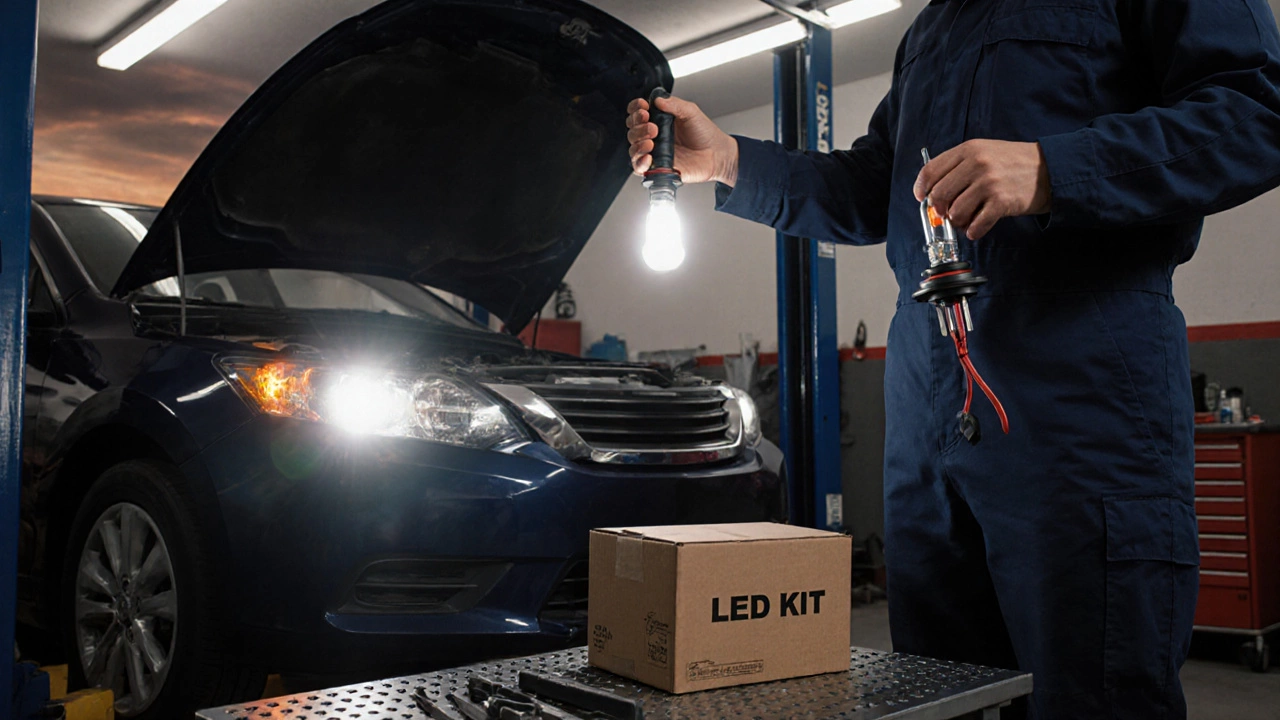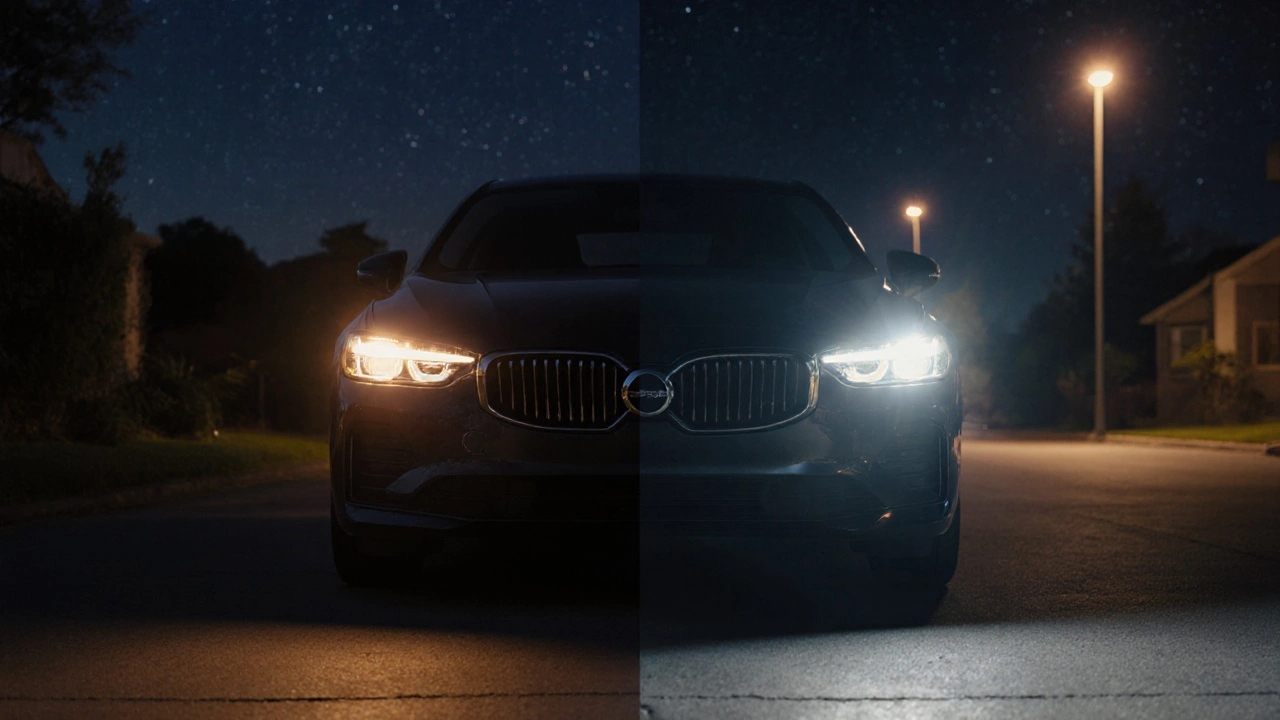Can You Directly Replace Halogen Headlights with LED Bulbs?
- Gareth Westbrook
- 19 10 2025 Lighting
Learn if you can directly replace halogen bulbs with LED headlights, covering fit, wiring, CANbus, legal rules, and step‑by‑step installation tips.
When working with halogen to LED conversion, the process of swapping traditional halogen bulbs for modern LED units in a vehicle's lighting system. Also known as LED headlight retrofit, it lets drivers boost brightness, cut power draw, and give their car a fresh look. LED headlight retrofit, a specific upgrade where LED modules replace stock bulbs often requires a new wiring harness, the set of connectors and cables that safely feed power to the LEDs to avoid flicker or error codes. At the same time, automotive lighting, the broader category covering all light sources on a vehicle standards influence how you mount the LEDs, while energy efficiency, the measure of light output per watt of power consumed drives many owners to make the switch. In short, halogen to LED conversion encompasses LED headlight retrofit, demands a proper wiring harness, and is shaped by automotive lighting regulations and energy‑saving goals.
The first step is picking the right LED kit. Look for units that match your car’s bulb size (H7, H11, etc.) and offer a clear lumen rating—most drivers find 5,000‑7,000 lumens per headlight plenty bright without blinding on‑coming traffic. Next, check the wiring harness. A plug‑and‑play harness eliminates the need to splice wires, reducing installation time and keeping the car’s electrical system safe. If your vehicle uses CAN‑bus technology, you’ll also need a CAN‑bus decoder to stop dashboard warning lights; this decoder is a small module that translates LED signals back to the car’s computer.
Installation is basically a three‑step process: remove the old halogen bulb, connect the new LED and harness, and secure everything with the provided clips. Most kits come with a torque‑adjustable headlamp aim tool—use it to line up the beams so you stay within legal glare limits. Speaking of legality, many regions require LED headlights to meet specific photometric standards (often ECE R112 for Europe or FMVSS 108 in the US). Before you buy, verify that the LEDs are certified for road use in your country; otherwise you risk fines or failing a vehicle inspection.
Beyond the headlights, consider the impact on your car’s overall electrical load. LEDs draw far less current than halogens, which can improve battery life and reduce alternator strain—especially beneficial for vehicles with a lot of aftermarket electronics. Some owners even notice a slight fuel‑economy bump because the engine doesn’t have to work as hard to keep the electrical system stable. That’s the energy‑efficiency payoff many drivers cite when they choose LED upgrades.
Now that you’ve got a solid grasp of the parts, the wiring, and the legal landscape, you’re ready to explore the full range of articles below. They dive deeper into alignment tips, cost breakdowns, safety checks, and real‑world experiences that will help you decide if a halogen to LED conversion is right for your ride.

Learn if you can directly replace halogen bulbs with LED headlights, covering fit, wiring, CANbus, legal rules, and step‑by‑step installation tips.

Learn if swapping halogen headlights for LED is illegal in Australia, what standards apply, how to stay compliant, and the steps to a legal, safe conversion.